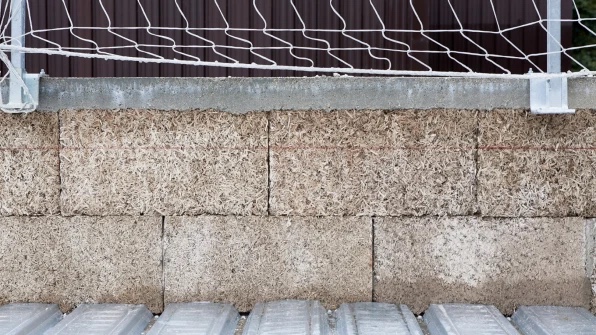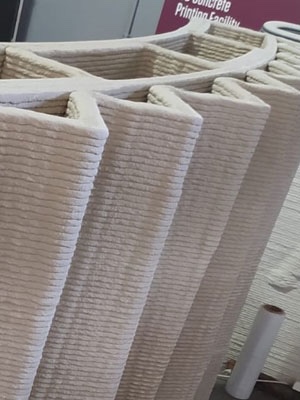Last month, the U.S. Department of Energy (DOE) awarded a $3.74 million grant to researchers at Texas A&M University, for a plan to research applications for additive construction (AC) using hempcrete. Specifically, the DOE’s funding comes from the Advanced Research Projects Agency- Energy (ARPA-E), via its Harnessing Emissions into Structures Taking Inputs from the Atmosphere (HESTIA) program. Hempcrete is any building material made from a mixture of hemp with lime and water.
The research team is led by Petros Sideris, an assistant professor at Texas A&M’s Zachry Department of Civil and Environmental Engineering. The five other members include three professors that also come from the Zachry Department, as well as two professors from Texas A&M’s College of Architecture. The plan centers around exploring the potential for using hempcrete to accentuate the emissions reductions achievable by AC, while also creating affordable residential, and possibly commercial, buildings.

In a university press release, Dr. Sideris pointed out, “While production of conventional construction materials such as concrete requires large amounts of energy and releases large amounts of CO2, hempcrete is a net-carbon negative material, which can provide major environmental benefits. …Resilience to natural hazards is [also] intertwined with environmental sustainability because building damage and subsequent repairs due to extreme events such as hurricanes result in major environmental impacts.”
Regarding resilience, Dr. Sideris is referring to the capabilities of AC to produce unique shapes, as a way to create structures that are more resistant to natural disasters than those produced by conventional construction methods. As for its being net-carbon negative, this is what accounts for its receiving the HESTIA grant, which was created in 2021 specifically for encouraging the use of net carbon negative building materials.

Image courtesy of Texas A&M
Although hemp has been used as a building material for centuries, and European companies have been relying on it for modern construction projects for decades, the plant was banned in the U.S. in 1937. It was not until the passage of the 2018 Farm Bill by the U.S. Congress, that American hemp production was once again permitted at the federal level. Since then, scattered amounts of interest in using hemp as a building material have surfaced in news cycles from time to time.
Still, there has been little progress in using the material for AC until now, so hempcrete’s future incorporation with the technology could be accelerated if the Texas A&M project is successful. Moreover, it would seem that the use of hempcrete in general would itself be accelerated long-term, were cannabis to be legalized at the federal level in the U.S. Federal legalization would facilitate larger supply chains for both cannabis in general, and hempcrete in particular. Its use in production of hempcrete would be a logical way to upcycle large amounts of cannabis industry waste. Finally, the relative independence of AC from existing construction supply chains means that it could be far easier for the material to take off with AC than with companies using conventional building methods.
Subscribe to Our Email Newsletter
Stay up-to-date on all the latest news from the 3D printing industry and receive information and offers from third party vendors.
You May Also Like
Industrial Giant Ingersoll Rand Leads $19M Round Backing Inkbit’s AI-Driven 3D Printing
Inkbit, the Massachusetts-based original equipment manufacturer (OEM) of multi-material, AI-integrated 3D printers, has closed a $19 million financing round. Ingersoll Rand, a US giant in the industrial equipment sector, led...
3D Printing Unpeeled: Digital FDM Filament for Functional Gradients
Just published in Nature, a paper by a Seoul National University team looks at “3D printing with a 3D printed digital material filament for programming functional gradients.” Sang-Joon Ahn, Howon...
3D Printing Unpeeled: $5000 Cold Spray 3D Printer, Roland DGA & Living Materials
The AeroForge is a $5000 cold spray metal printer for copper made by a student team at Rice University. In a paper for ACS Central Science a team from Nanjing...
3D Printing News Briefs, April 27, 2024: Research, Digital Dentistry, Cycling, & More
We’re starting today’s 3D Printing News Briefs with some research into 3D printed luminescent quantum-dot polymer architectures and free-form laser beam shaping, and then on to an open source 4-axis...































